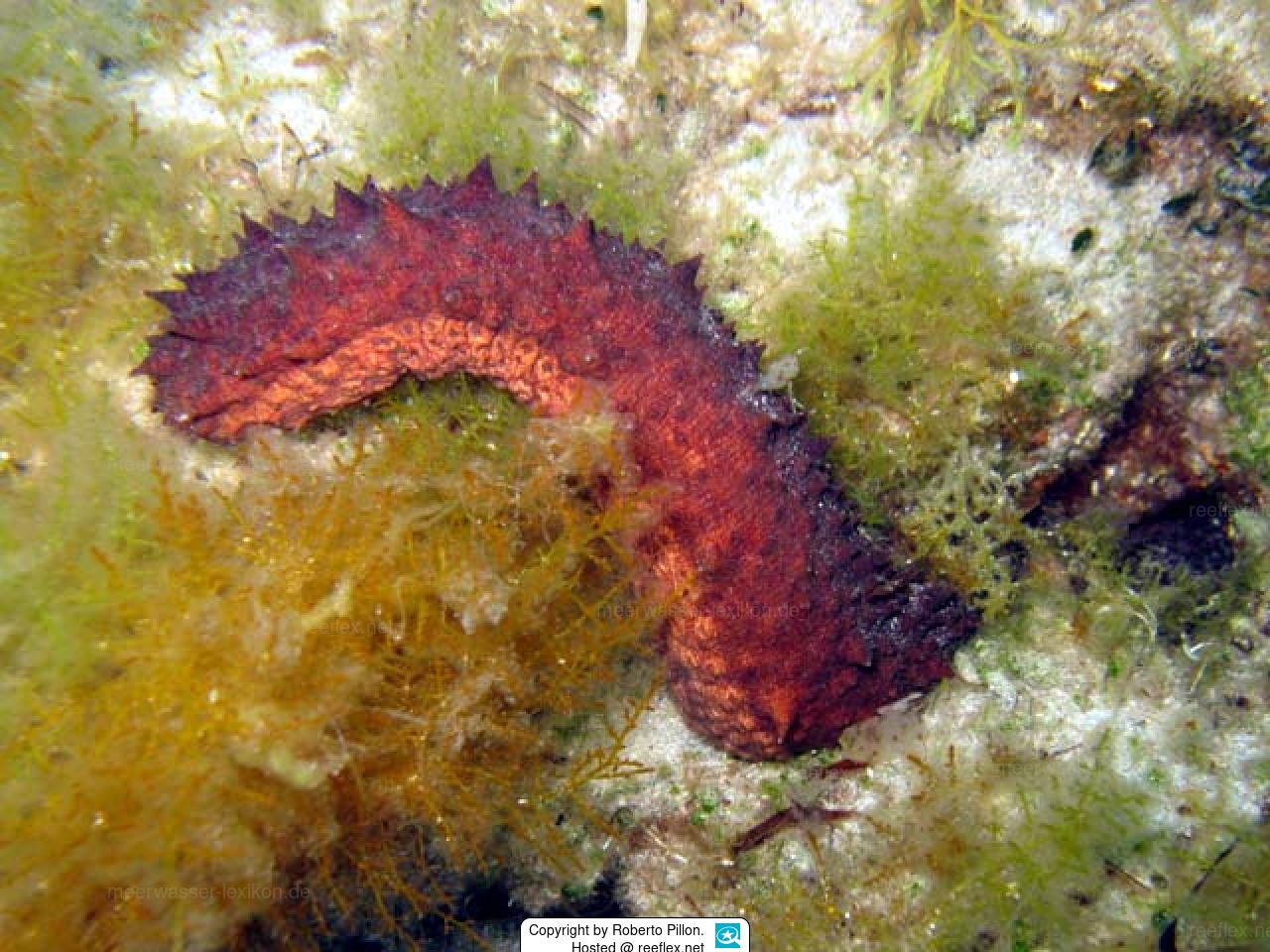Info
Gmelin, 1791
Synonyms:
Holothuria cavolini Delle Chiaje, 1824
Holothuria columnae Cuvier, 1817
Holothuria columnae de Blainville, 1821
Holothuria columnae Delle Chiaje, 1824
Holothuria maxima Delle Chiaje, 1823
Holothuria petagnae Delle Chiaje, 1824
Holothuria tremula Linnaeus, 1767
Holothuria tubulosa Gmelin, 1791
Classification: Biota > Animalia (Kingdom) > Echinodermata (Phylum) > Echinozoa (Subphylum) > Holothuroidea (Class) > Aspidochirotida (Order) > Holothuriidae (Family) > Holothuria (Genus) > Holothuria (Holothuria) (Subgenus) > Holothuria (Holothuria) tubulosa (Species)
Sea cucumbers of the family Holothuriidae possess, exceptions confirm the rule, so-called Cuvier's tubes (named after the French naturalist Georges Cuvier, * August 23, 1769 † May 13, 1832).
These are long, thin tubes that are located on the rectum of the echinoderms and are flung towards potential predators for defense.
These released tubes form a sticky, tough and stretchy network in which fish, crustaceans or other prey predators can become entangled.
The adhesives may also contain toxins (holothurin).
Sea cucumbers are the vacuum cleaners of the oceans, continuously cleaning the sea floors, so it may be useful for aquarists to keep one or more sea cucumbers in the aquarium to avoid detritus rich zones.
Problem:
Many sea cucumbers of the family Holothuriidae can release their venom into the aquarium water when they are in danger or dying, corals are mostly not harmed by the venom, but fish usually die.
Holothurins can cause severe, burning pain when in contact with the skin and irritation and even blindness when in contact with the eyes. When ingested systemically, the toxins can cause paralysis, muscle spasms, and discomfort in the digestive system, and in larger quantities, death by respiratory paralysis.
Since sea cucumbers are considered a delicacy in many Asian countries, the Cuvier's tubes containing the toxins must be removed before preparation or consumption.
Synonyms:
Holothuria cavolini Delle Chiaje, 1824
Holothuria columnae Cuvier, 1817
Holothuria columnae de Blainville, 1821
Holothuria columnae Delle Chiaje, 1824
Holothuria maxima Delle Chiaje, 1823
Holothuria petagnae Delle Chiaje, 1824
Holothuria tremula Linnaeus, 1767
Holothuria tubulosa Gmelin, 1791
Classification: Biota > Animalia (Kingdom) > Echinodermata (Phylum) > Echinozoa (Subphylum) > Holothuroidea (Class) > Aspidochirotida (Order) > Holothuriidae (Family) > Holothuria (Genus) > Holothuria (Holothuria) (Subgenus) > Holothuria (Holothuria) tubulosa (Species)
Sea cucumbers of the family Holothuriidae possess, exceptions confirm the rule, so-called Cuvier's tubes (named after the French naturalist Georges Cuvier, * August 23, 1769 † May 13, 1832).
These are long, thin tubes that are located on the rectum of the echinoderms and are flung towards potential predators for defense.
These released tubes form a sticky, tough and stretchy network in which fish, crustaceans or other prey predators can become entangled.
The adhesives may also contain toxins (holothurin).
Sea cucumbers are the vacuum cleaners of the oceans, continuously cleaning the sea floors, so it may be useful for aquarists to keep one or more sea cucumbers in the aquarium to avoid detritus rich zones.
Problem:
Many sea cucumbers of the family Holothuriidae can release their venom into the aquarium water when they are in danger or dying, corals are mostly not harmed by the venom, but fish usually die.
Holothurins can cause severe, burning pain when in contact with the skin and irritation and even blindness when in contact with the eyes. When ingested systemically, the toxins can cause paralysis, muscle spasms, and discomfort in the digestive system, and in larger quantities, death by respiratory paralysis.
Since sea cucumbers are considered a delicacy in many Asian countries, the Cuvier's tubes containing the toxins must be removed before preparation or consumption.







 Roberto Pillon, Italien
Roberto Pillon, Italien














































